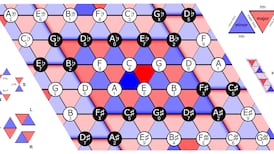A hibernating satellite has woken up one last time as it nears the finish of its 4.8 billion km journey to visit dwarf planet Pluto.
The New Horizons satellite is on a mission like no other - the furthest any spacecraft has travelled to reach its primary target.
It switched itself on three days ago, sending back a musical alert for controllers by English tenor Russell Watson that all was well and working properly after a nine-year journey.
New Horizons is still 260 million km from its target, but this is to allow plenty of time to test the satellite’s seven instruments. These include cameras and devices that can study the make-up of Pluto and the dust around it.
Intensive study
Its first encounter with the rock and ice ball, just a third the size of the moon, comes next month, on January 15th. The satellite will then embark on an intensive study of Pluto, with far better views than are available through the powerful Hubble Space Telescope.
Taking a periodic snooze and waking from hibernation is nothing unusual for New Horizons as there have been 18 such events, flight controllers at the Johns Hopkins University Applied Physics Laboratory in Maryland said.
New Horizons has spent two-thirds of its journey effectively switched off since its launch on January 19th, 2006.
“Symbolically, however, this is a big deal. It means the start of our pre-encounter operations,” said Glen Fountain, project manager at the Johns Hopkins lab.
Programmed wake-up
The satellite’s programmed wake-up came at 8pm Irish time last Saturday. It checked itself out and then sent word it was fully back on active mode.
The signal took four and a half hours to reach Earth but was delivered to flight controllers with a specially prepared rendition by tenor Watson of Where My Heart Will Take Me, which you can listen to here.
Pluto is very important to astronomers, despite it being demoted by the International Astronomical Union in 2006 from being our ninth planet to a mere planetoid.
It is one of many such bodies that have been found discovered in an area known as the Kuiper Belt, a ring of objects situated far beyond the orbit of the planet Neptune. These are thought to be leftovers from the creation of the solar system more than 13 billion years ago.
The satellite will give us our first up close and personal look at Pluto and its fellow dwarf planets.










